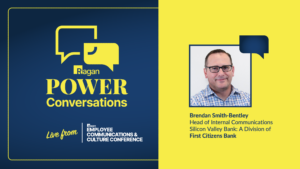Unclouding the fog of workplace jargon
What does it mean to communicate with intent?

Think about the last meeting you had, whether it was with your organization or a client. Putting aside what you talked about when you got together, think about the words that were said in that meeting. Was the communication clear for everyone involved, or did it feature workplace and industry jargon feature heavily?
As communicators, it’s our job to ensure that we’re getting the right message across. A recent study by Duolingo and LinkedIn found that jargon-heavy messaging can cloud that, no matter how good our intent is. But thankfully, there are ways to help guide your team through a forest of industry jargon and loaded terms to a clearer picture of the work they’re doing, and ultimately to a more inclusive workplace.
We spoke with Cameron Lindsay, co-founder and CEO of Haystack, about how jargon can divide a workplace—and what can be done to combat it.
A barrier to inclusion and growth
The use of jargon might make sense on the surface. If you’ve been in an industry for years and work with something every day, it’s reasonable to expect everyone around you to have the same level of familiarity with the words you’re tossing around. But that’s not a wise assumption to make.
Lindsay remembered a time earlier in his career when he was in a meeting and kept hearing terms that he wasn’t familiar with thrown around, sowing the seeds of confusion and doubt.
“I was having terms thrown at me and was unfamiliar with what they meant,” Lindsay said. “As a new hire like I was at the time, you want to come out of the gate successfully and don’t want to look ill-informed.”
The use of clear communications and the avoidance of jargon is even more important in organizations with remote employees that place heavy focus on messaging apps like Slack or Teams.
“When we’re working remote, we rely a lot more on asynchronous communication,” he continued. “People don’t want to just type the same words over and over again, so we sometimes fall back on acronyms.
These remote situations can also make it less comfortable for newer employees to ask questions about what terms mean than when they’re in the hallway at the office.
Working toward an intranet glossary
Knowing that jargon in the workplace impedes growth and integration into company culture, Lindsay sought a solution. When he couldn’t find one, he co-created his own.
Haystack, an intranet platform that lets companies create a glossary of industry and organizational terms to diffuse the jargon, catalogues new lingo and acronyms when they become material to the business
These types of resources, be they from Haystack or elsewhere, can help lower the ego barrier for the team and provide a central portal for learning, which in turn can strengthen bonds between communicators and the rest of the organization.
“When you post an internal memo, glossaries can help clear up any confusion on messages that might come up, making life easier for the whole team and building trust,” Lindsay said.
The stakes couldn’t be higher. Organizations that empower employees to anonymously ask what terms mean without the fear of reaction also stand a great chance to build a vibrant culture by putting psychological safety first. But this requires communicators to address the jargon early on.
“If you proactively help your team define terms or jargon they’re confused about,” said Lindsay, “you give them a better chance to succeed right out of the gate.”
Sean Devlin is an editor at Ragan Communications. In his spare time he enjoys Philly sports, a good pint and ’90s trivia night.







